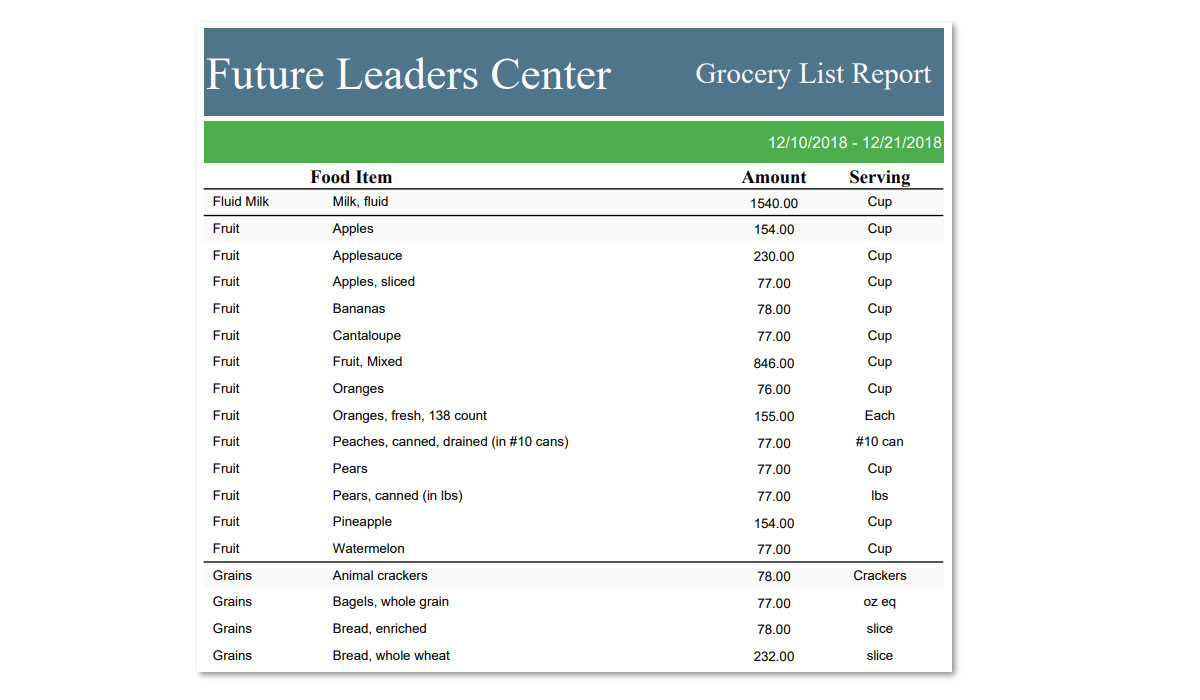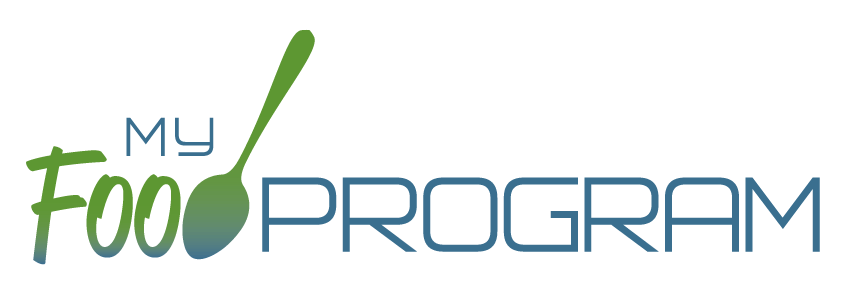
Estimating the amount of food to buy can be a difficult task. Here are a few tips to make it easier:
- Always plan your portions using the CACFP minimum portion size requirements. This ensures that every child gets enough food to meet their developmental needs.
- If you prepare your own meals, be sure to use a written recipe to ensure that you get the same results every time. Written recipes are also critical for you to be able to prove that you are preparing enough food to meet the minimum portion size requirements.
Ready to make that shopping list? Here are the steps you should take:
-
- The first step is to plan your menus. If you are using My Food Program software, be sure to select the correct units. The units are after the food item name in parentheses. For example, Bread WGR (in slices). The units that you select when planning a menu are the units that will appear on your food production record AND on your grocery estimate.
- The second step is to figure out how many children in each age group you are expecting at each meal. You can do this using their typical schedule from enrollment records or attendance records. If you are using My Food Program software, make sure that you participants have a schedule entered in My Food Program. Then your predictions will be automatic.
- The third step is to do the math for each food item. For each food item, multiply the minimum portion size requirement by the number of children in each age group you are expecting.
- Example: You expect to have 5 toddlers, 10 preschoolers and 5 school agers for breakfast and you are serving Milk, Toast and Bananas.
Milk:
(½ cup x 5 toddlers) + (¾ cup x 10 preschoolers) + (1 cup x 5 school agers) = 15 cups
Banana:
(½ x 5 toddlers) + (1 x 10 preschoolers) + (1 x 5 school agers) = 17½ bananas
Toast:
(½ x 5 toddlers) + (½ x 10 preschoolers) + (1 x 5 school agers) = 12½ slices
This may be a good time to enter some predicted food production records as well! - If you are using My Food Program, you can skip the math and just run the Grocery List Report. It pulls together your food quantities and lists them out by category:
- Example: You expect to have 5 toddlers, 10 preschoolers and 5 school agers for breakfast and you are serving Milk, Toast and Bananas.


You can pick any date range you want, down to one day. This allows you flexibility when shopping.
